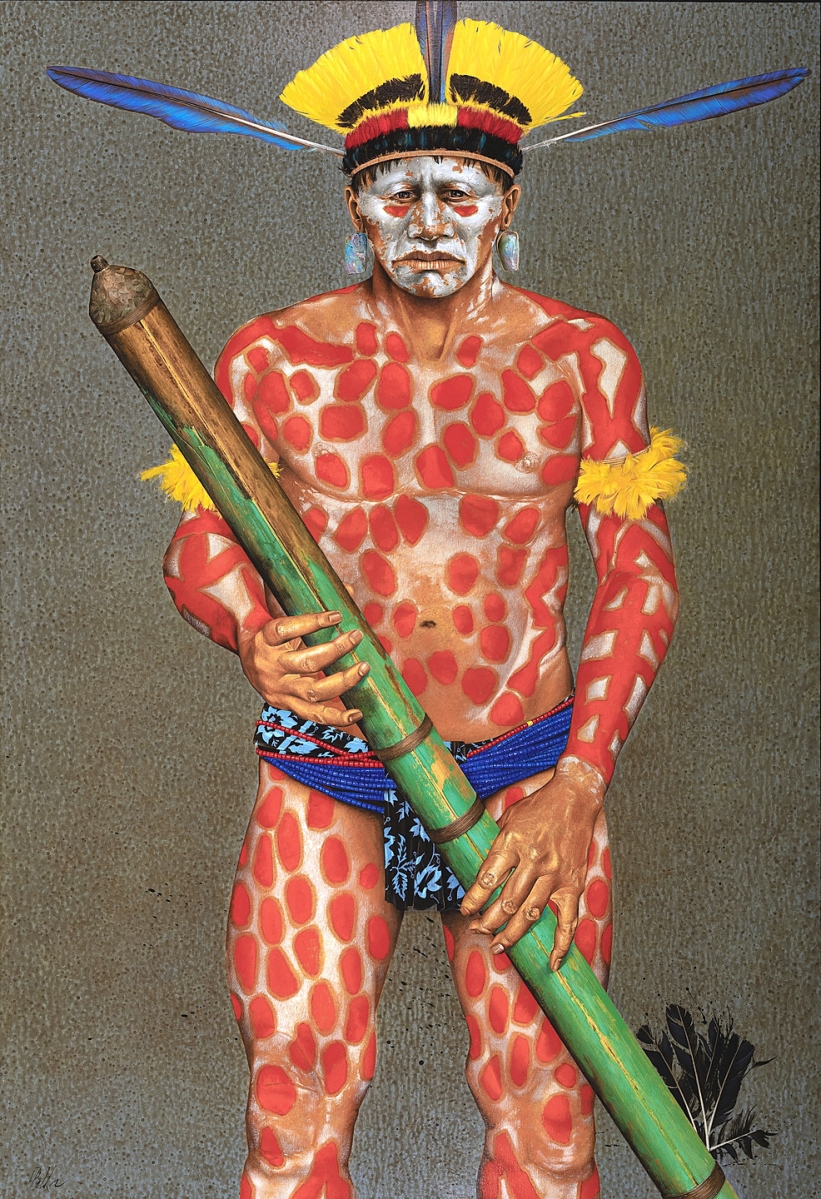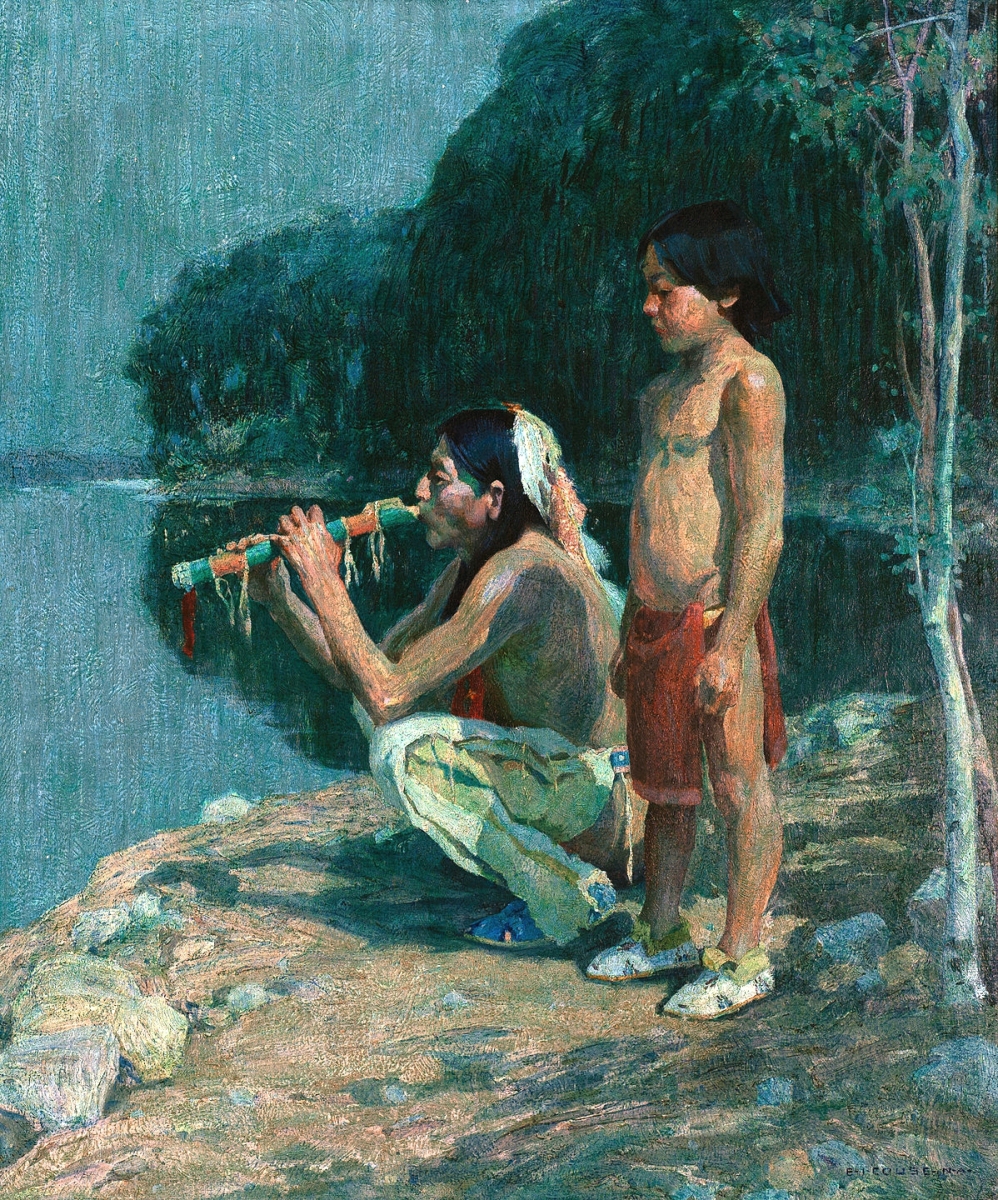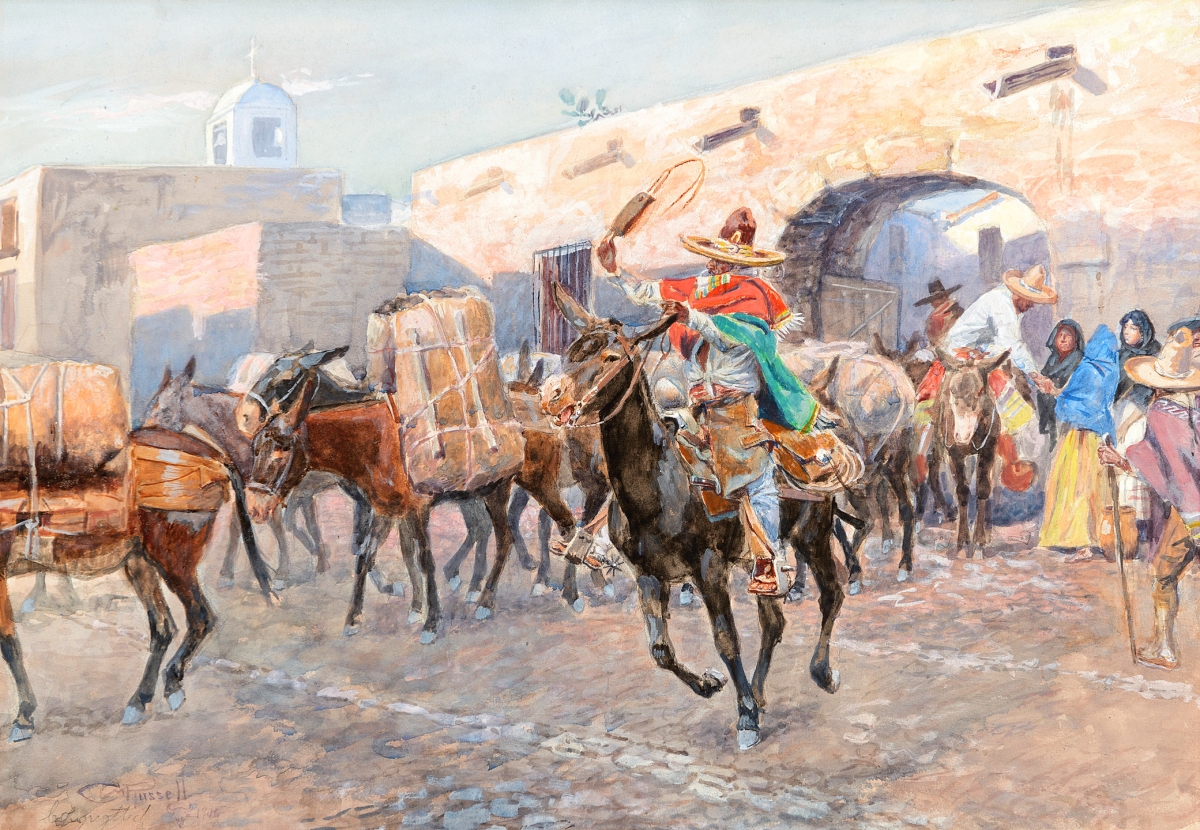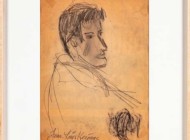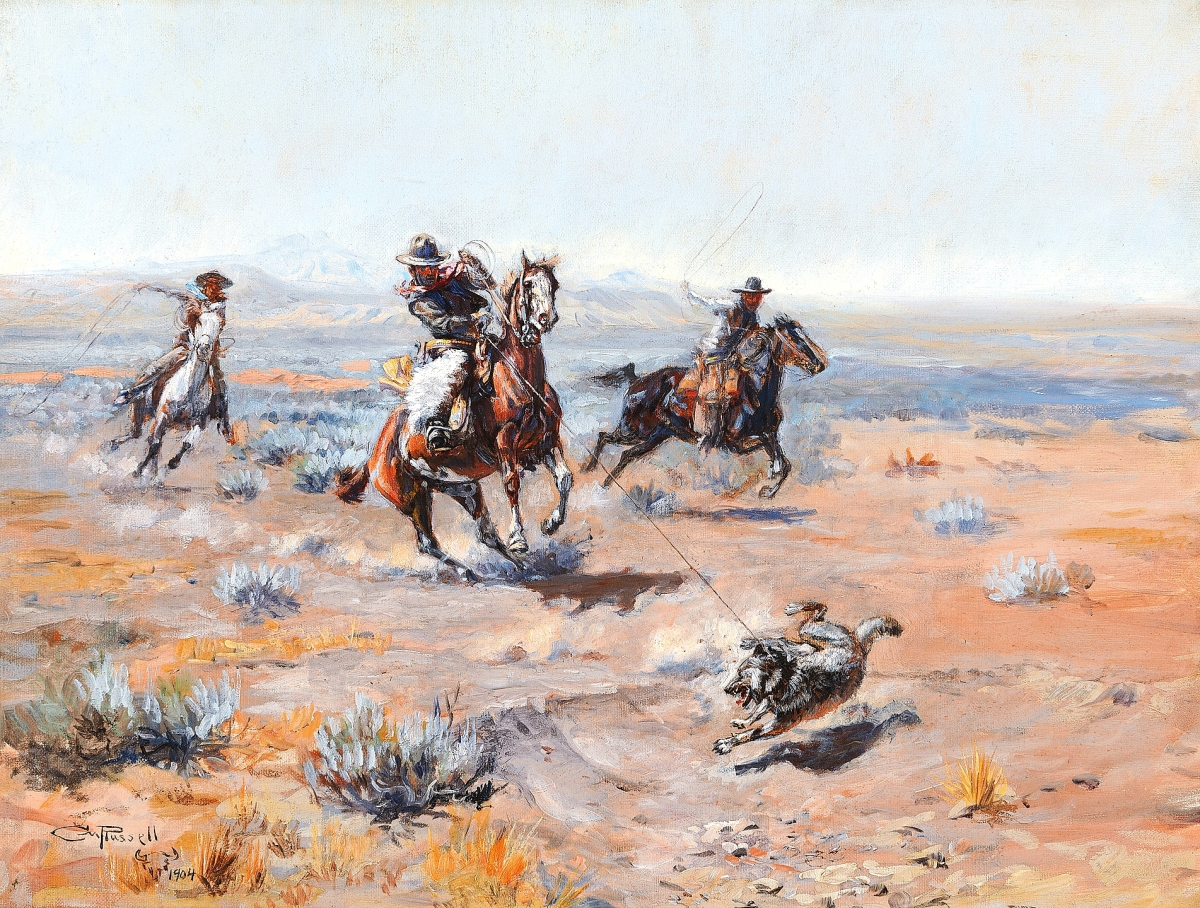
Charles Russell’s “Roping A Wolf” sold for $1,770,000. Auction house partner Mike Overby said Russell oils are rare to the market, many of them held in museums and high-level collections. The oil on canvas measured 15 by 20 inches and spoke to a time when wolves began attacking ranchers’ cattle following the US Government’s program of killing off the American buffalo.
Review by Greg Smith, Photos Courtesy Coeur d’Alene Art Auction
RENO, NEV. – On 394 lots, Coeur d’Alene Art Auction raked in $17,553,349 with 94 percent of all lots sold in its annual Best in the West auction July 31.
Mike Overby, partner at the auction house, said he was batting away consignments for the premier sale.
“We had such a large demand this year for consignments, like nothing I’ve ever seen,” he said. “People held off selling last year due to Covid, so this year the demand was through the roof. We had to cut it off in May because we were getting close to 400 lots and we don’t like going over that amount.”
Though the sale didn’t produce an auction house gross total record, Overby said it was among his best sales since the 2008 recession. His lot average was $44,552 as the most modest priced work sold for $1,089 and the highest brought $1.77 million. Artist auction records were set for Philip Goodwin, Edmund Osthaus and Peter Hurd.
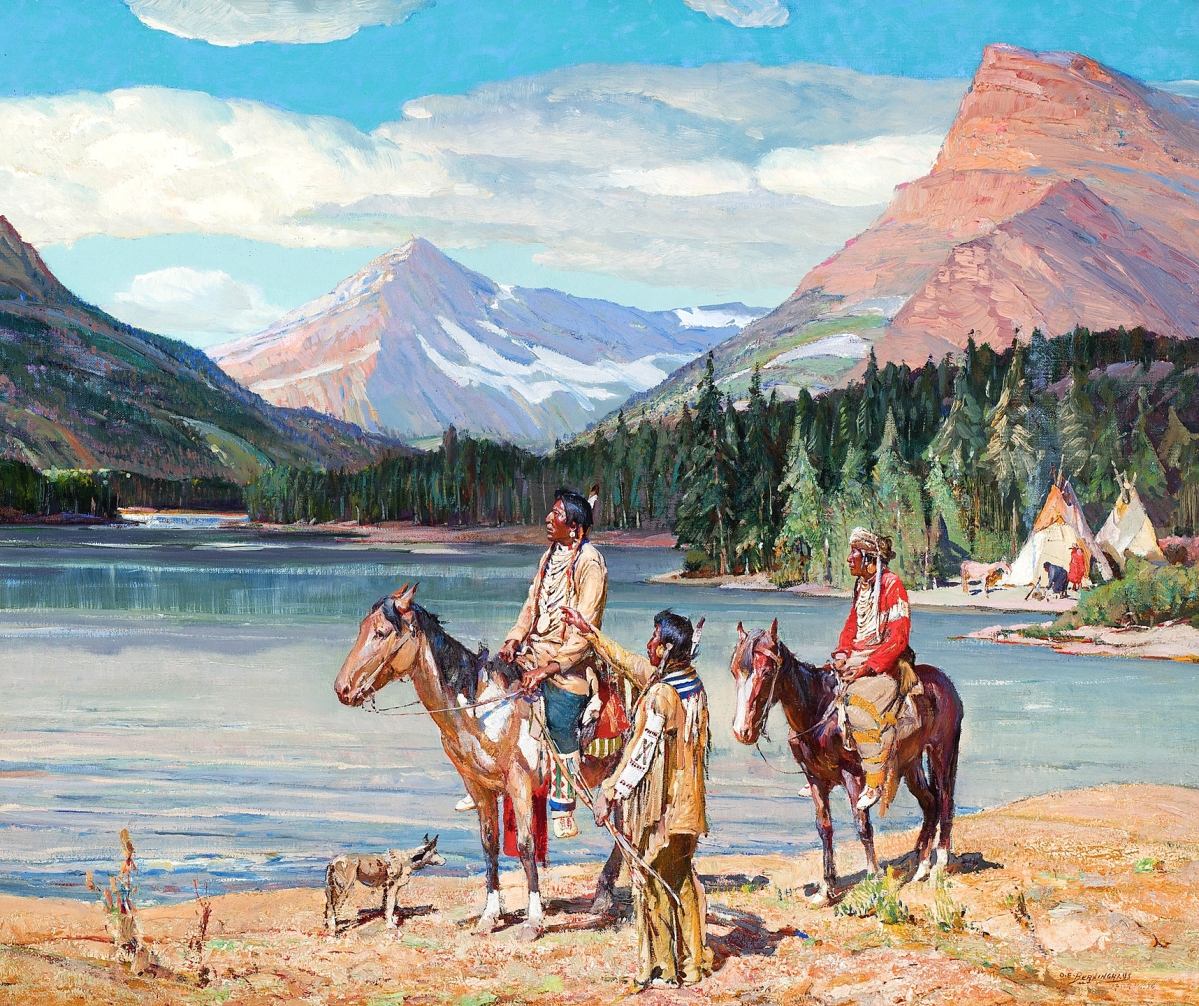
Oscar Berninghaus’ “The Domain of Their Ancestors” traded hands at $847,000, settling into the second highest auction record for the artist. The oil on canvas dates to 1925 and measures 25 by 30 inches. It is illustrated in three books. The bid was the highest placed to date on the platform Bidsquare.
The star of the day was undoubtedly Charles M. Russell with 17 works coalescing from various collections to produce a gross of more than $3.2 million. His best was the sale’s top lot, a 1904 oil on canvas titled “Roping A Wolf,” which took $1.77 million to an American private buyer. Nearly all of the buyers in the sale were private collectors, Overby said. The work measured only 15 by 20 inches.
“Russell oils are very rare,” Overby said. “And then it dated right to the beginning of his prime period. In 1904 he became the best version of himself as an artist. It has high action and great coloration.”
The work depicts three cowboys roping a wolf, a practice that gained traction in the American West when the buffalo herds dwindled. As their food source became more scant, wolves shed any timidity and began attacking ranchers’ cattle. This practice resulted.
Other Russell works would prove desirable. “Mexicans Leaving an Inn,” a 1906 watercolor on paper, 14 by 20 inches, realized $242,000. The Mexican Vaquero subject was a departure for Russell, inspired by a trip he made down to Mexico in 1906 with his father, Charles Silas Russell, and a reporter. A show of Russell’s work was mounted at the Porter Hotel in Mexico City, which opened up an extended stay for the artist and his pack in Chihuahua with Señor Terrazas, who owned the largest ranch in the country. The auction house noted that the present work was likely painted upon Russell’s return to Great Falls, Mont. It was exhibited in 1914 at the Dore Gallery in London.
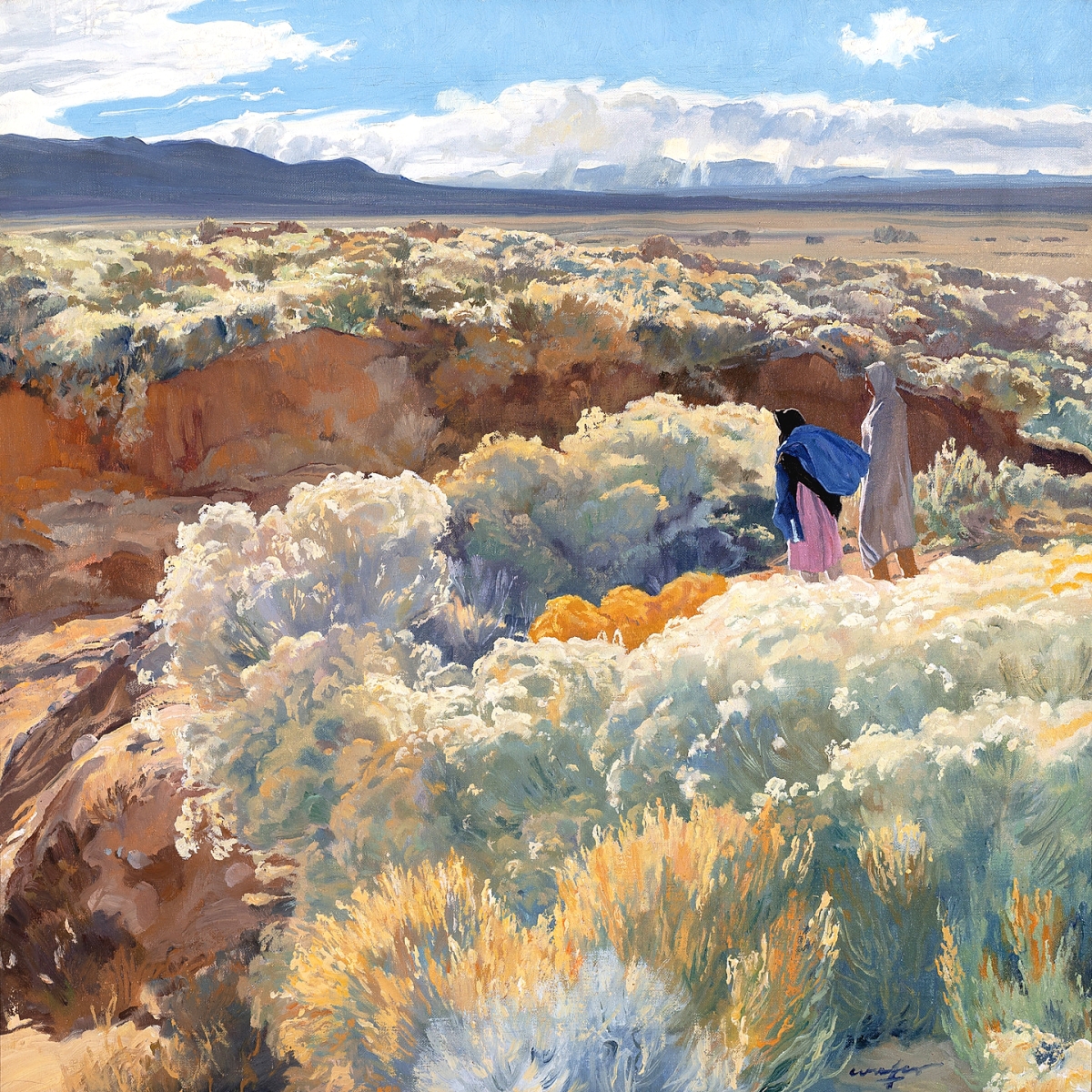
“I’d put it up against any landscape he has ever done,” Mike Overby said regarding “Greasewood and Sage,” a 25-by-25-inch oil on canvas by Walter Ufer that sold for $665,500. Overby said Ufer produced the fewest works of any early Taos artist, making them quite rare.
From the collection of Pete and Janet Taggares came three Charles Russell illustrated letters.
“They did most of their collecting in the 1970s-80s, so these were fresh to the market,” Overby said. The Taggareses were one of the largest farmers in Washington state before Peter passed away in 1999.
More than 100 letters from Charles Russell have survived, Overby estimated. He said, “They’re collectable for two reasons: these are illustrated letters; he would do these nice watercolors that would accentuate the story he was telling in writing. As a standalone piece of art, they are tremendous. But then as a bonus you get the letters he wrote. He was a wordsmith with his own unique dialect. When you sit down and read these, they really make you smile. Just the wording, he was a true cowboy, not pretentious at all. Some of these were written to high-powered millionaires in New York, but he was still spinning stories about the West. The people that received these in the 1900s kept them. Normally you throw them away, but these were special even when they were fresh.”
The letter, addressed to Friend Con, was largely about land speculation, including an apple orchard in Washington, which may explain the Taggares interest. Russell wrote, “…picking apples aint very exciting. I like apples and so do you but if they will give me the country back the way it was I’d agree to eat dried fruit the rest of my life.” It sold for $157,300. At $133,100 was another letter from Russell to his friend Ad Day with an illustration of a horse bucking its rider, seen mid-air. Ad Day was the general manager of the Knight-Watson Ranching Company in southern Alberta, which supplied bucking horses to shows. Russell told Day about an Australian he met who told him riders in that country could handle anything, and Russell told him to head up to Days ranch for a challenge.
![“[It] has always been considered to be one the best paintings he ever did,” said Mike Overby on Eanger Irving Couse’s “The New Rug,” a 1913 oil on canvas that brought $484,000. It is the sixth highest auction record for the artist. The 46-by-33-inch painting was commissioned in 1917 by the Beacon Manufacturing Company.](https://www.antiquesandthearts.com/wp-content/uploads/2021/08/couse_-_the_new_rug.jpg)
“[It] has always been considered to be one the best paintings he ever did,” said Mike Overby on Eanger Irving Couse’s “The New Rug,” a 1913 oil on canvas that brought $484,000. It is the sixth highest auction record for the artist. The 46-by-33-inch painting was commissioned in 1917 by the Beacon Manufacturing Company.
The collection of Toni Bloomberg, a vice president on the Board of Trustees at the San Diego Museum of Art, offered up six works from her collection.
A few of the six works had just been on exhibit at the museum in a show titled “Visions of the West: Highlights from the Bloomberg Collection,” which came down in March. Overby said the works shipped from the museum to the auction house’s facility in Reno.
Notable here was a Walter Ufer (1876-1936) oil on canvas of 25 by 25 inches titled “Greasewood and Sage,” which sold for $665,500.
Overby said, “Ufer was not a prolific artist, he did not do many paintings compared to some of the other Taos artists. He’s about as rare as you get. This was a beautiful landscape, I’d put it up against any landscape he has ever done, but the added bonus is this one has figures in it.”
Bloomberg’s collection offered two of the eight Eanger Irving Couse (1866-1936) works in the sale. Her “Moonlight Sonata,” a 36-by-30-inch oil on canvas that took $217,800, featured Ben Lujan playing a flute by the water’s edge at night, his son Eliseo standing by his side. Her other work from the artist included another subject with a flute, this a reclining female playing the instrument as she is stretched out on a rock by a stream. It sold for $84,700.
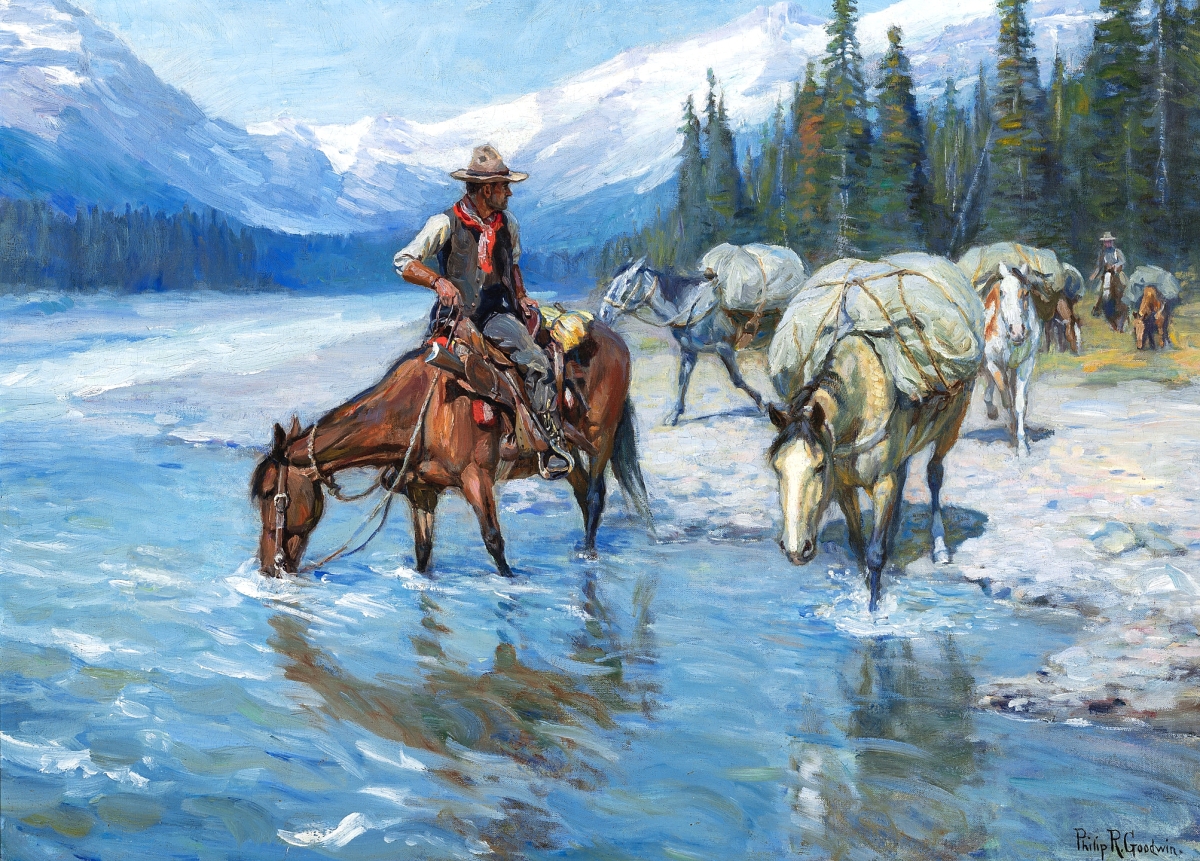
“Hitting the Trail,” a 24-by-33-inch oil on canvas by Philip R. Goodwin sold for $453,750. Goodwin was largely a sporting and wildlife artist, but Mike Overby said the pack train image seen here provided crossover interest to more traditional Western art collectors. This image was reproduced numerous times by the Brown & Bigelow company on its calendars, the auction house noting, “It seemed as if the image was everywhere in America…One of the finest paintings he ever completed.”
No Couse work in the sale compared to the $484,000 result for “The New Rug,” a 1913 oil on canvas measuring 46 by 34 inches. The work features Antonio Lujan holding a vibrant Navajo rug and was originally commissioned in 1917 by the Beacon Manufacturing Company, a rug company in New Bedford, Mass. It came with a small oil on canvas laid to board study of the same subject.
“That work has always been considered to be one the best paintings he ever did,” said Overby. “It’s an amazing piece, I’ve been trying to get it for years, I was thrilled when I got the call.”
An auction record was established for Philip R. Goodwin (1881-1935) when “Hitting the Trail” sold for $453,750. The pack train scene had provenance to Jackson Hole collector William P. Healey. Overby said that even though Goodwin is well-known for his sporting and wildlife scenes, his pack train image had crossover appeal with those beyond the sporting passions.
At $157,300, another artist auction record was set for Peter Hurd (1904-1984) with “The Eve of St John.” The work was the first version of the same image now housed in the collection of the San Diego Museum of Art. It features the glow of candlelight – masterfully executed in tempera-across the face of Dorothea Herrera, the daughter of Hurd’s ranch foreman.
![Four works by Albert Bierstadt included “Mount Baker, Washington,” an 1891 oil on canvas that sold for $363,000. According to William Tylee Abbott, “In August of 1890 Bierstadt was commissioned to paint a large oil of ‘Mt Baker’ for Sir George Stephens of the Canadian Pacific Railway. According to instructions from William Cornelius Van Horne, General Manager of the Railway, ‘... [if] you paint Mount Baker from the first little bridge west of our Stone River bridge I am very sure that Sir George would like that, so sure that you might feel entirely safe in stopping there to paint it. Cloudy days are not infrequent there and you might lose a few days getting a good view of it, but under favorable conditions the view is so magnificent that I am sure it would be well worth your while. I think it the finest natural composition I have ever seen. The point indicated is the nearest one on our line from which a good view of Mount Baker can be had. The Fraser River, very broad here, stretches away towards it, the centre cone of Mount Baker rises apparently directly from the river and is frequently reflected in it with great distinctness.’” The work measured 14½ by 20 inches.](https://www.antiquesandthearts.com/wp-content/uploads/2021/08/bierstadt_-_mount_baker__washington.jpg)
Four works by Albert Bierstadt included “Mount Baker, Washington,” an 1891 oil on canvas that sold for $363,000. According to William Tylee Abbott, “In August of 1890 Bierstadt was commissioned to paint a large oil of ‘Mt Baker’ for Sir George Stephens of the Canadian Pacific Railway. According to instructions from William Cornelius Van Horne, General Manager of the Railway, ‘… [if] you paint Mount Baker from the first little bridge west of our Stone River bridge I am very sure that Sir George would like that, so sure that you might feel entirely safe in stopping there to paint it. Cloudy days are not infrequent there and you might lose a few days getting a good view of it, but under favorable conditions the view is so magnificent that I am sure it would be well worth your while. I think it the finest natural composition I have ever seen. The point indicated is the nearest one on our line from which a good view of Mount Baker can be had. The Fraser River, very broad here, stretches away towards it, the centre cone of Mount Baker rises apparently directly from the river and is frequently reflected in it with great distinctness.’” The work measured 14½ by 20 inches.
“Hurd’s market has really turned on just over the last four or five years,” said Overby. “We’ve seen really increased interest in his major works. His work is a crossover of Western and American art, he’s an artist that appeals to many.”
The last notable auction record was set at $242,000 for Edmund H. Osthaus (1858-1928), a 36-by-48-inch oil on canvas that was deaccessioned from the Grand Rapids Public Museum. “Two Hunting Dogs,” an 1891 work, had been in the museum long enough that its entry into the collection was unknown. Two other Osthaus works also came from the collection: “Let’s Get Acquainted” at $96,800 and “Returning Home” at $57,475.
Works from Maynard Dixon (1875-1946) were punctuated by two related works that sold together for $145,200. The oils on board, both 25 by 34 inches, were titled “Indian and Solider (The Indian of Yesterday)” and “Indian and Teacher (The Indian of Today).” They were completed in 1938 for a competition put on by the Treasury Section of Painting and Sculpture for the Bureau of Indian Affairs. As a result, Dixon was commissioned to create two 8½-by-13-foot murals for the Department of the Interior’s new building in Washington DC.
Describing the works, Dixon said, “Our 1st Indian wars were with Plains tribes: so I have chosen this type, with a cavalry officer of 1865-1880. The chief’s gesture says: ‘This is our land. You shall drive us no further.'” Of the second work, he said, “The white man says: ‘The ground belongs to us.’ The Indian says: ‘We belong to the ground.’ The white man studies soil chemistry. The Indian prays to the Earth.”
Coeur d’Alene Art Auction’s next sale will be online on November 13. It will be followed by March in Montana, March 18-19.
All prices reported include the buyer’s premium. For information, www.cdaartauction.com or 208-772-9009.

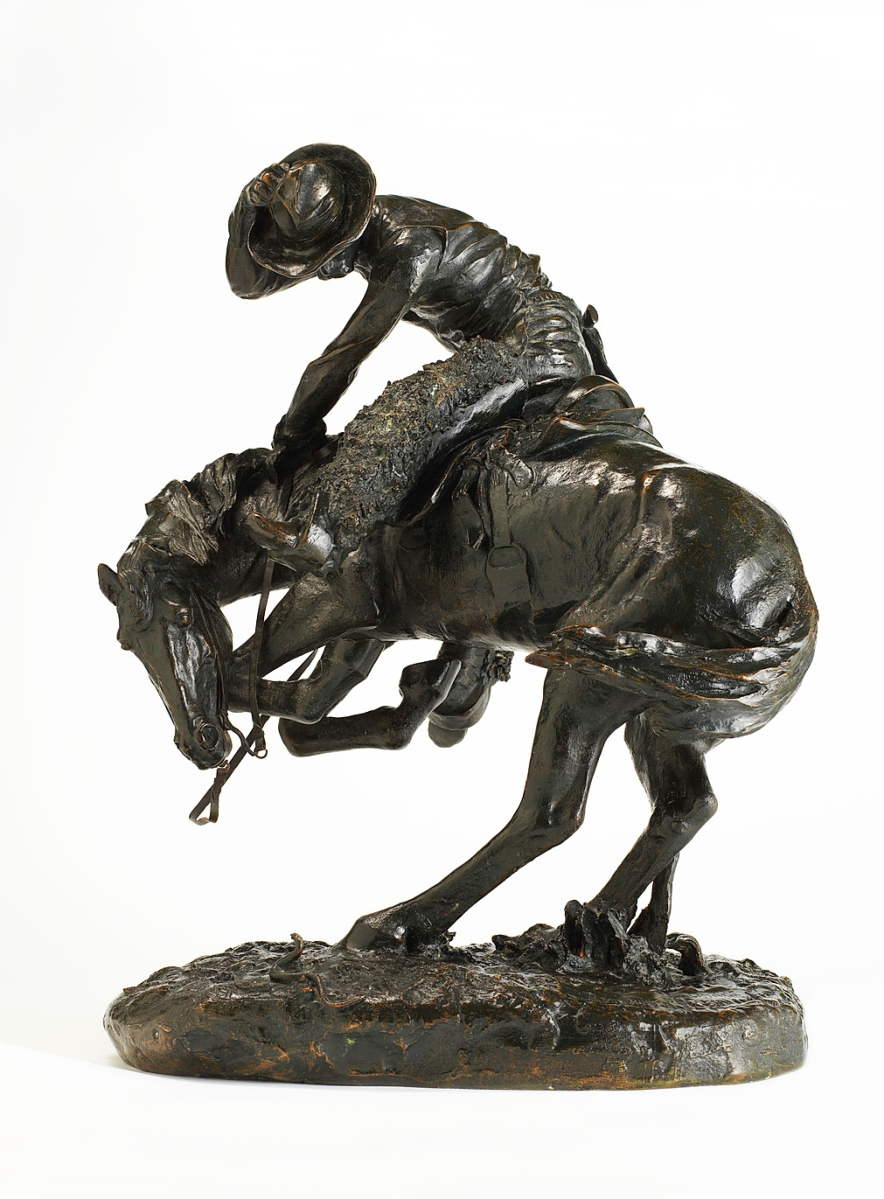
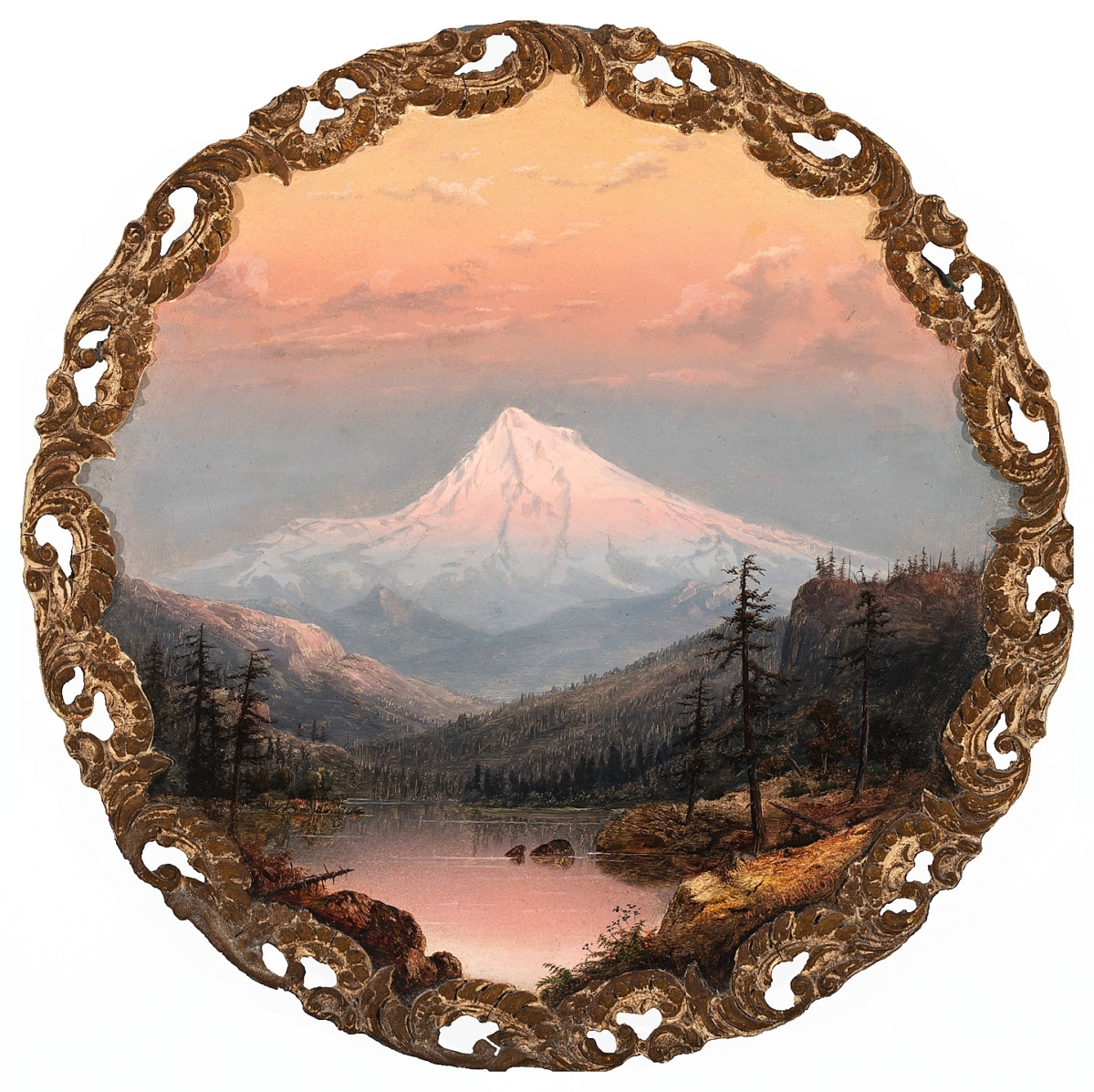
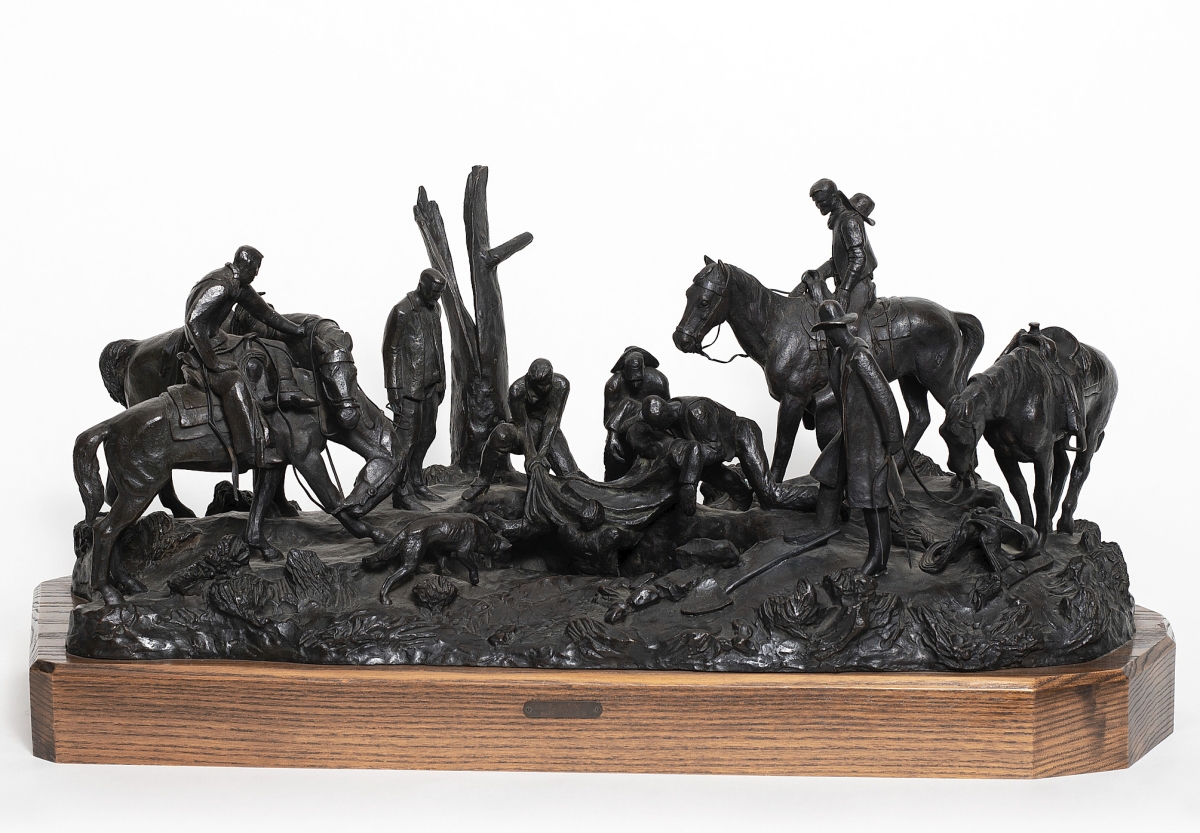
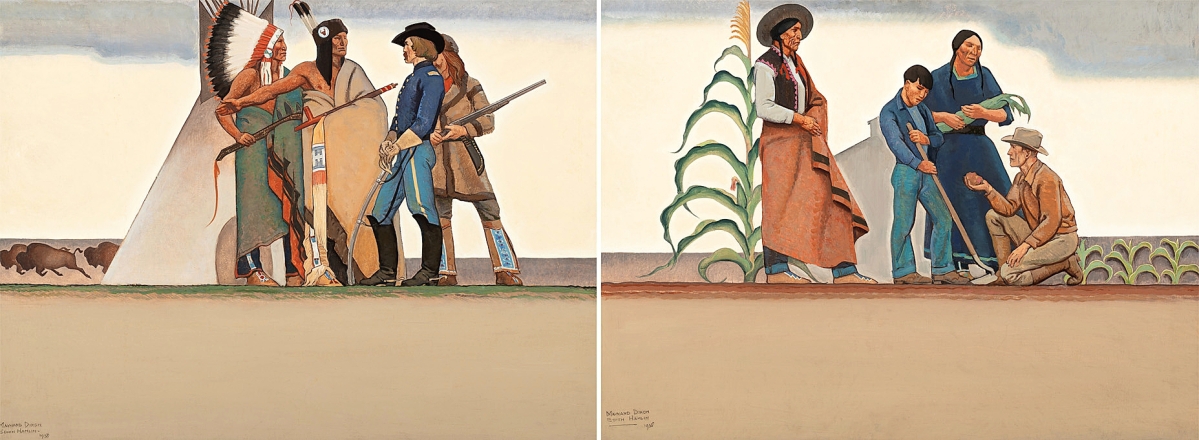
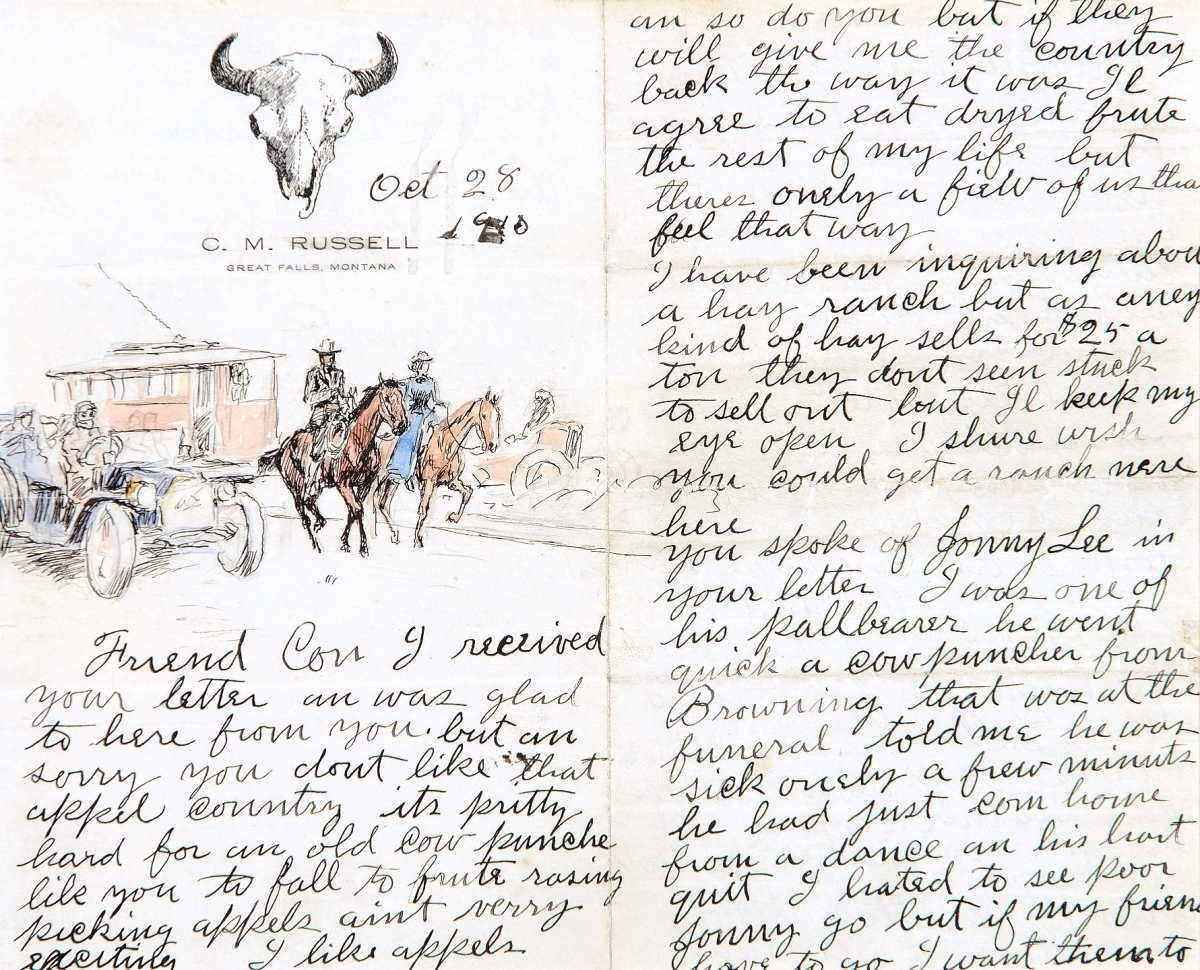
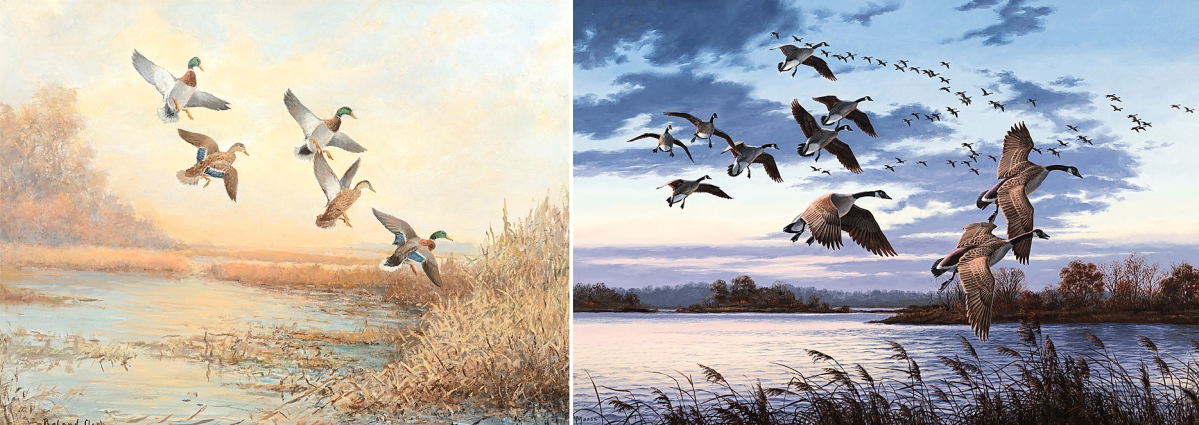
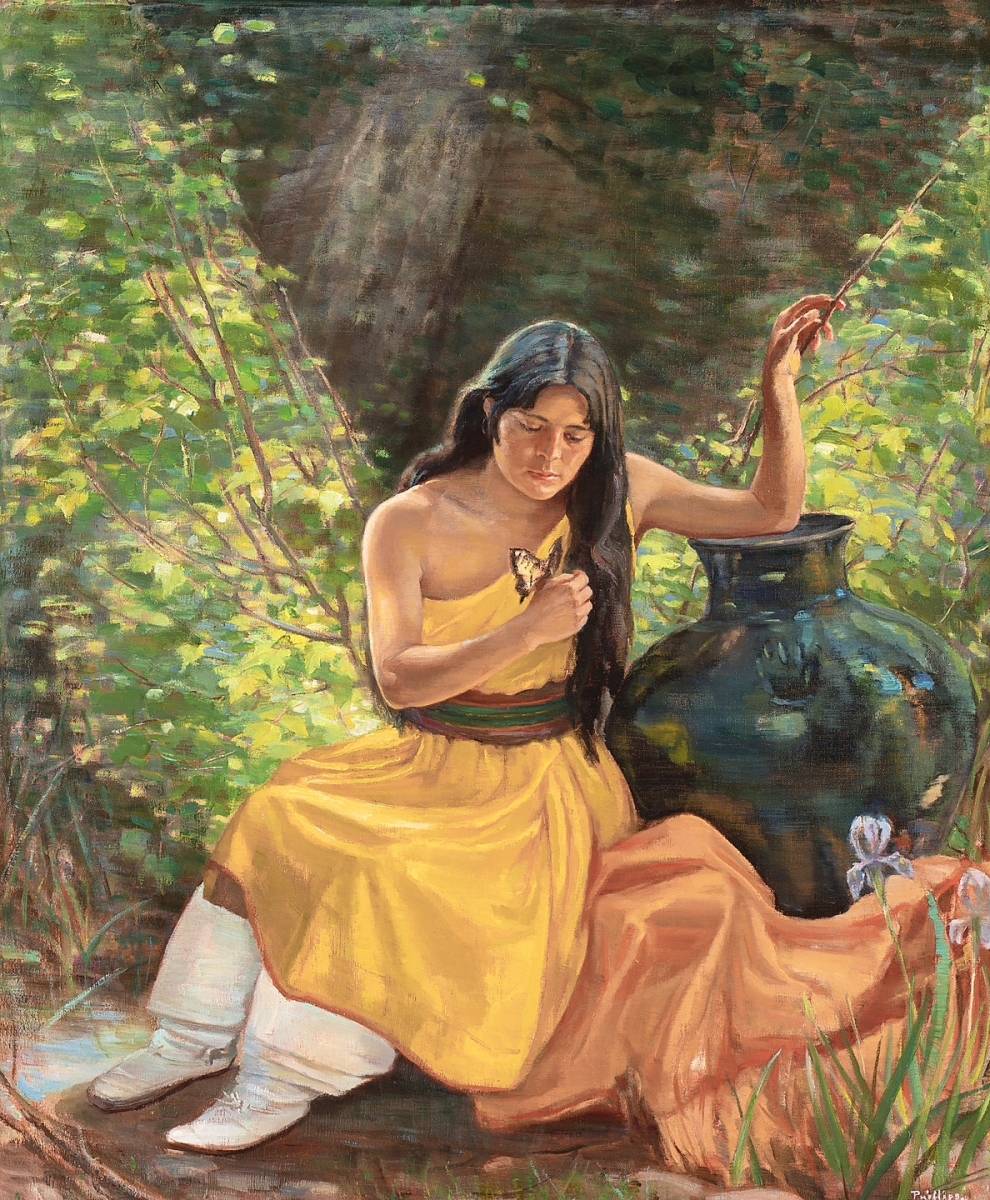
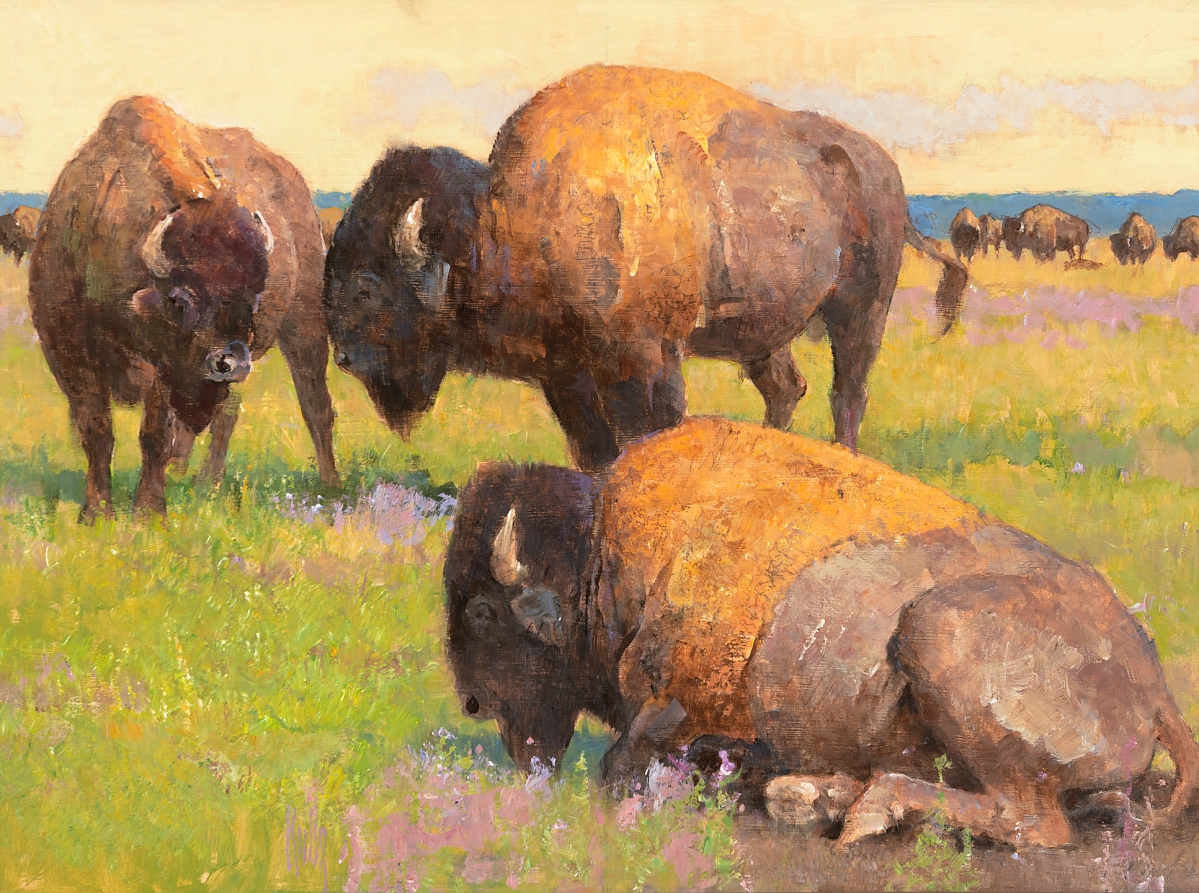
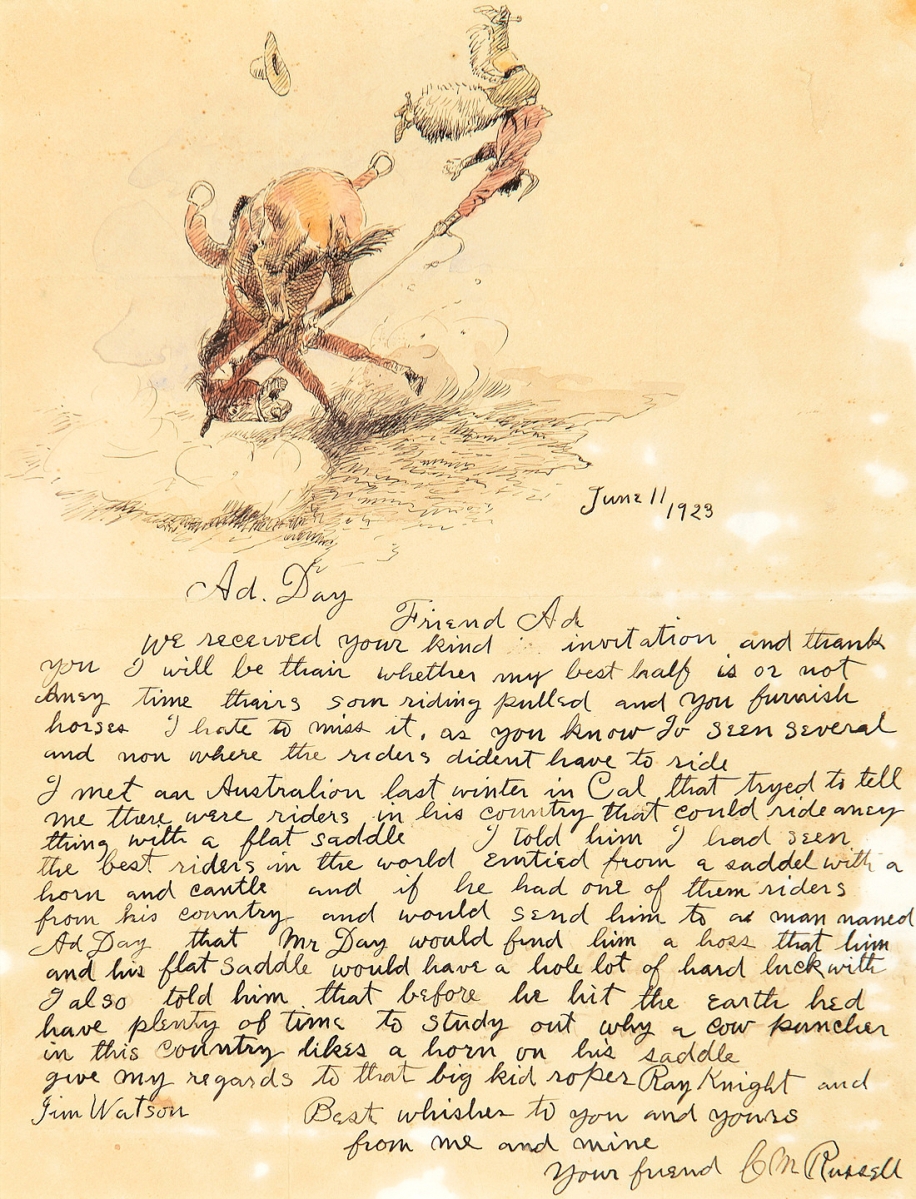
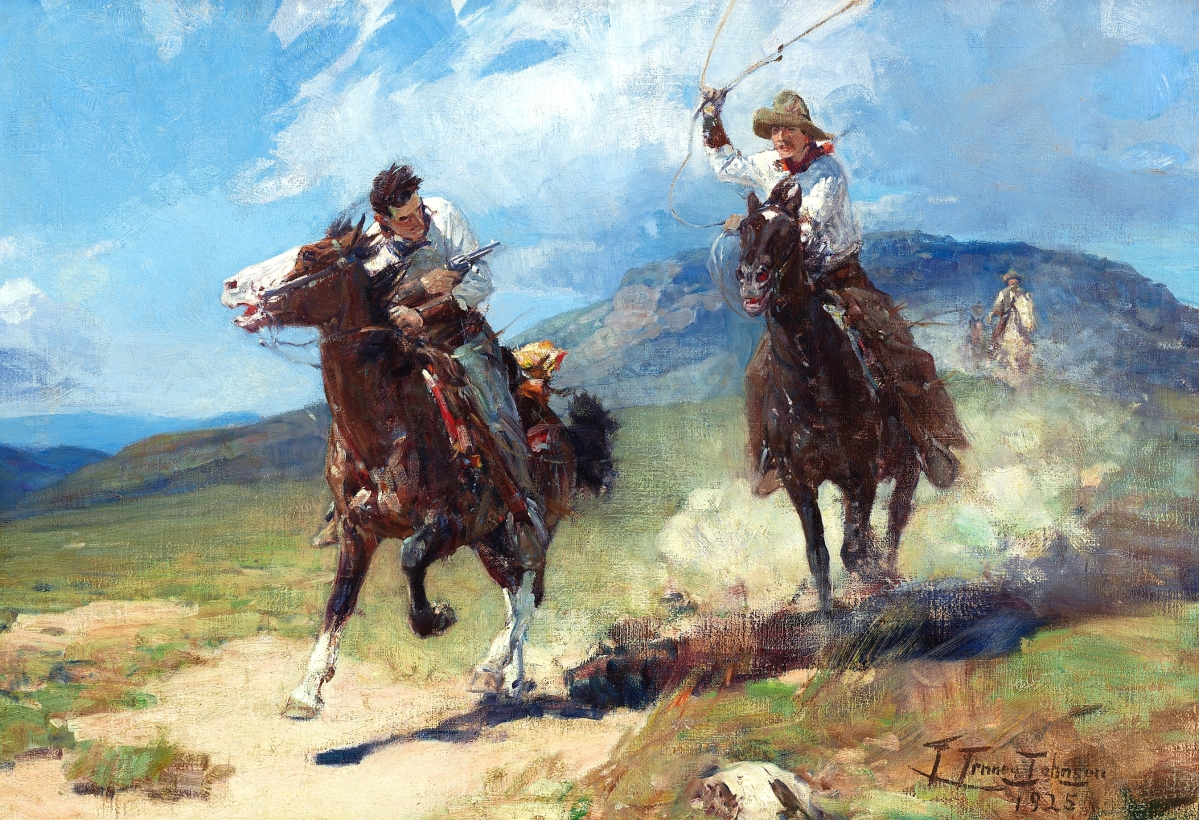
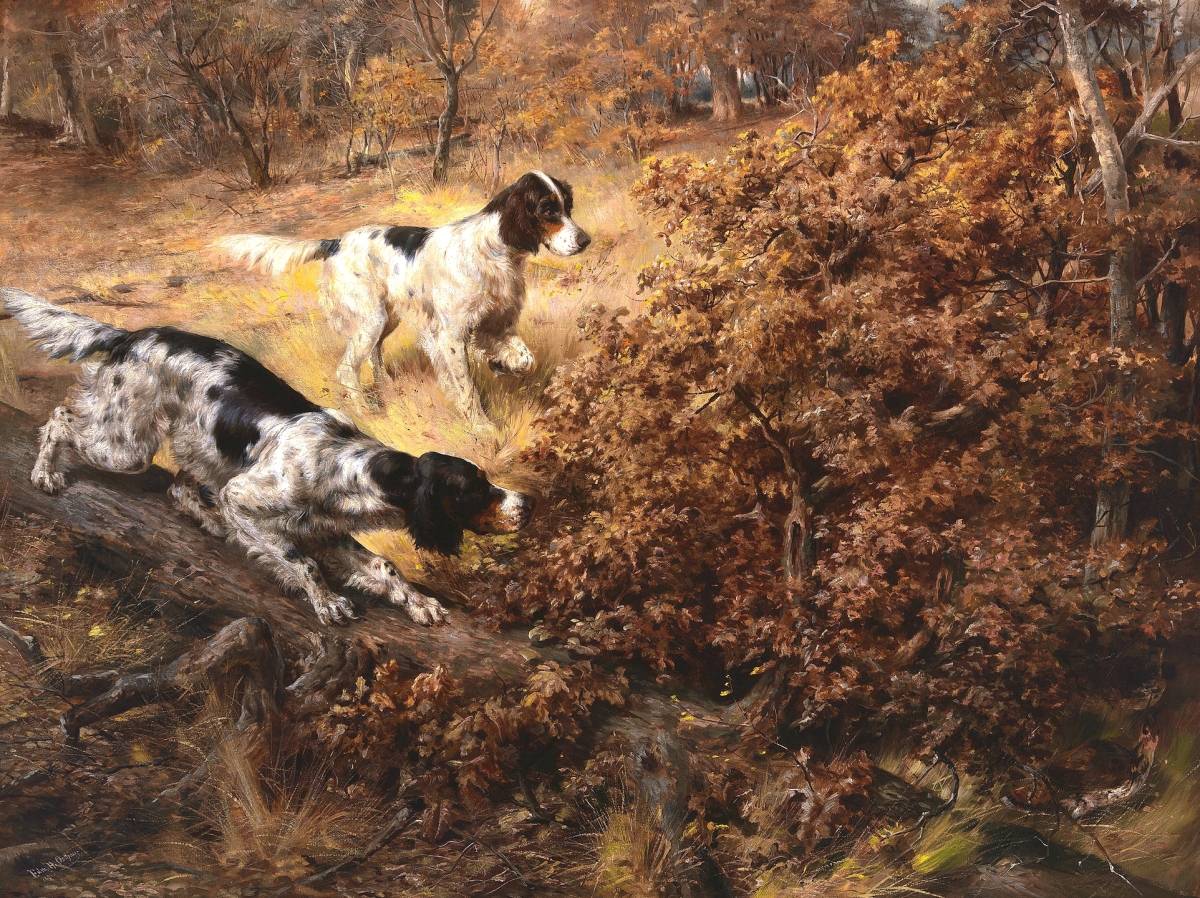
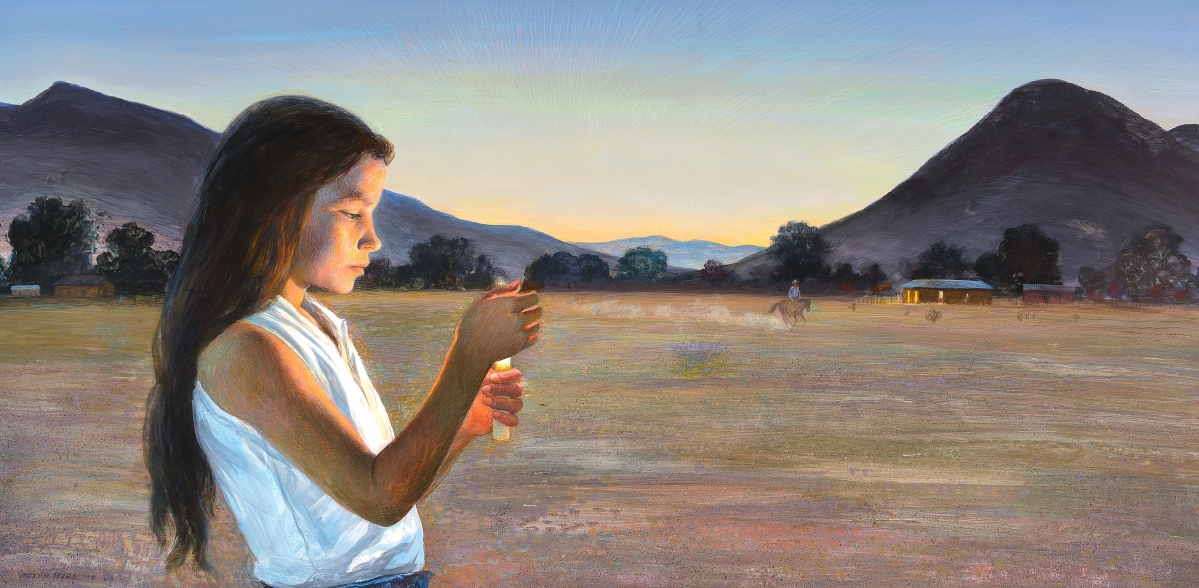
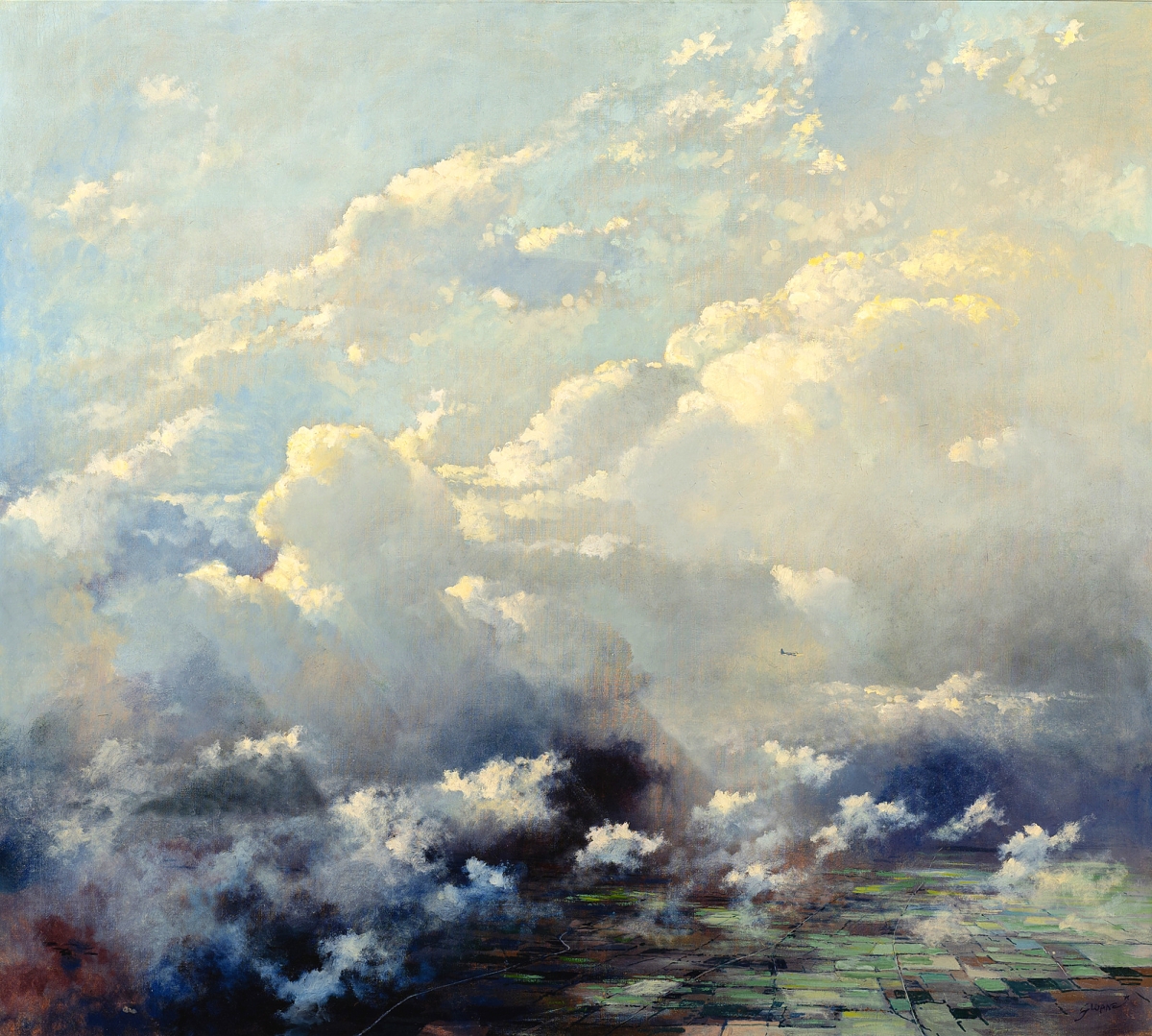
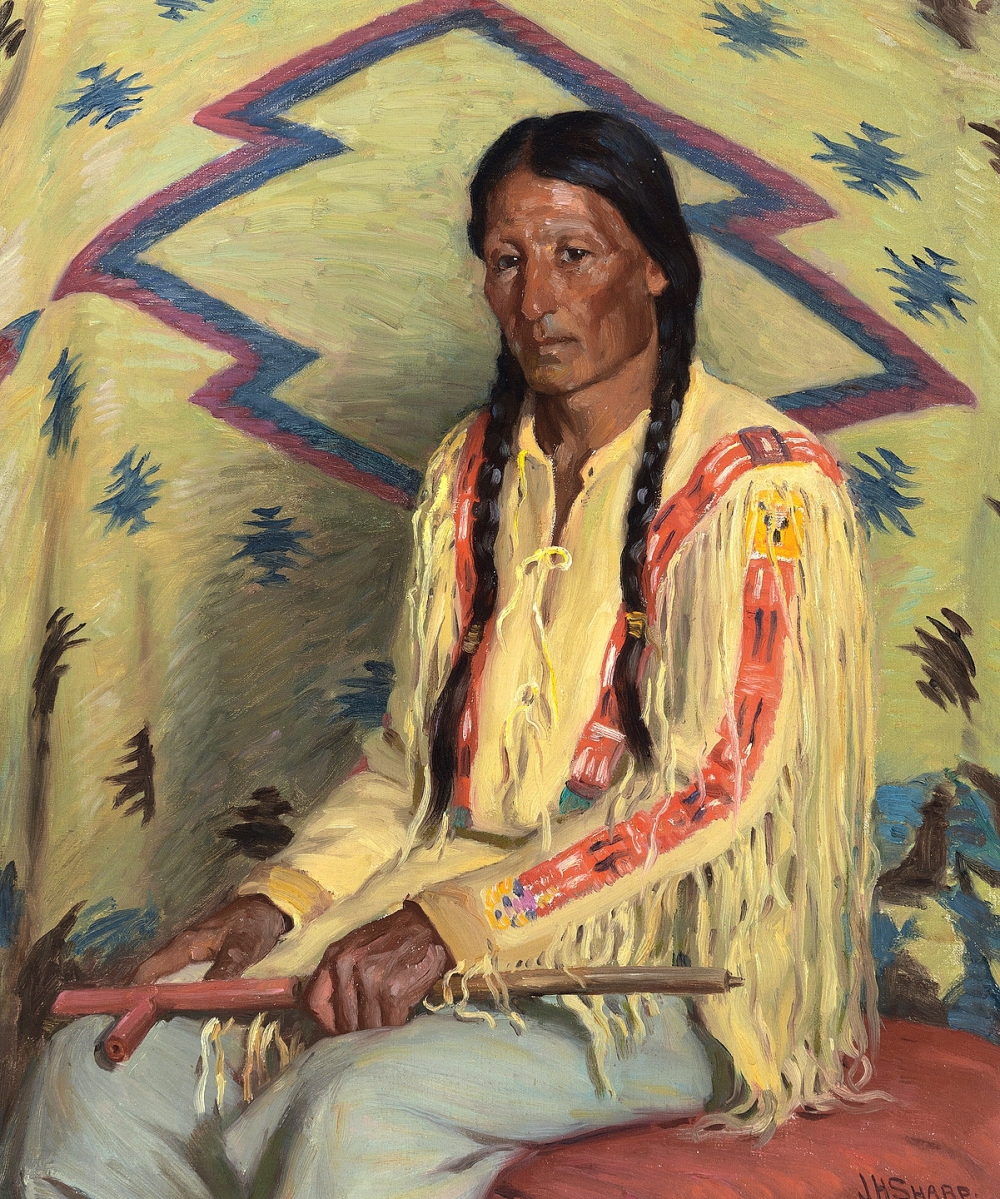
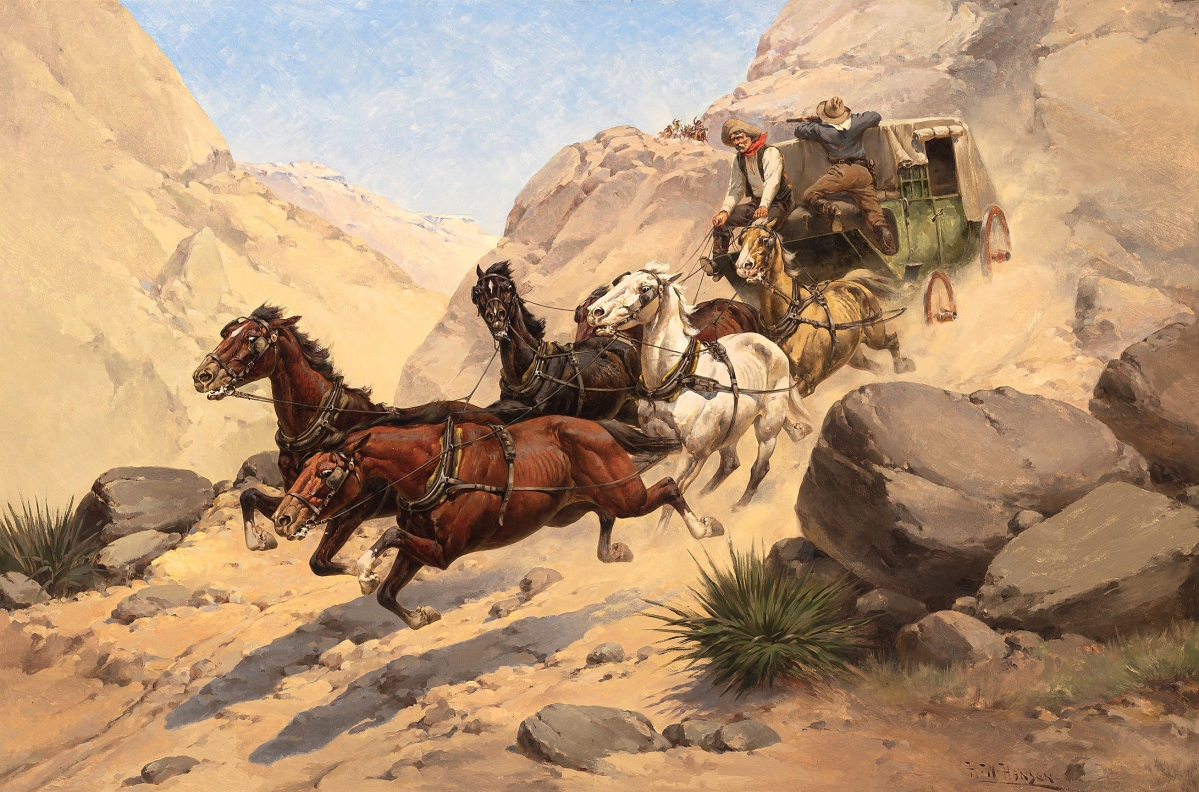
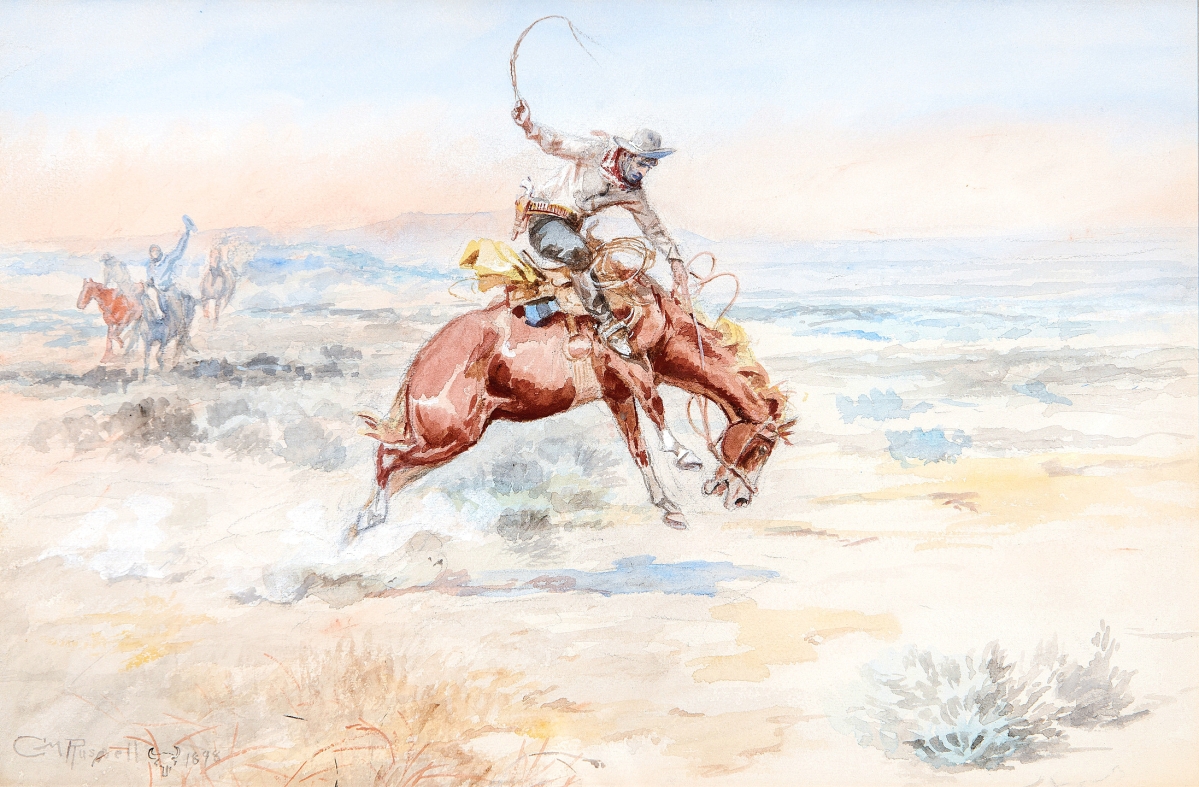
.jpg)
